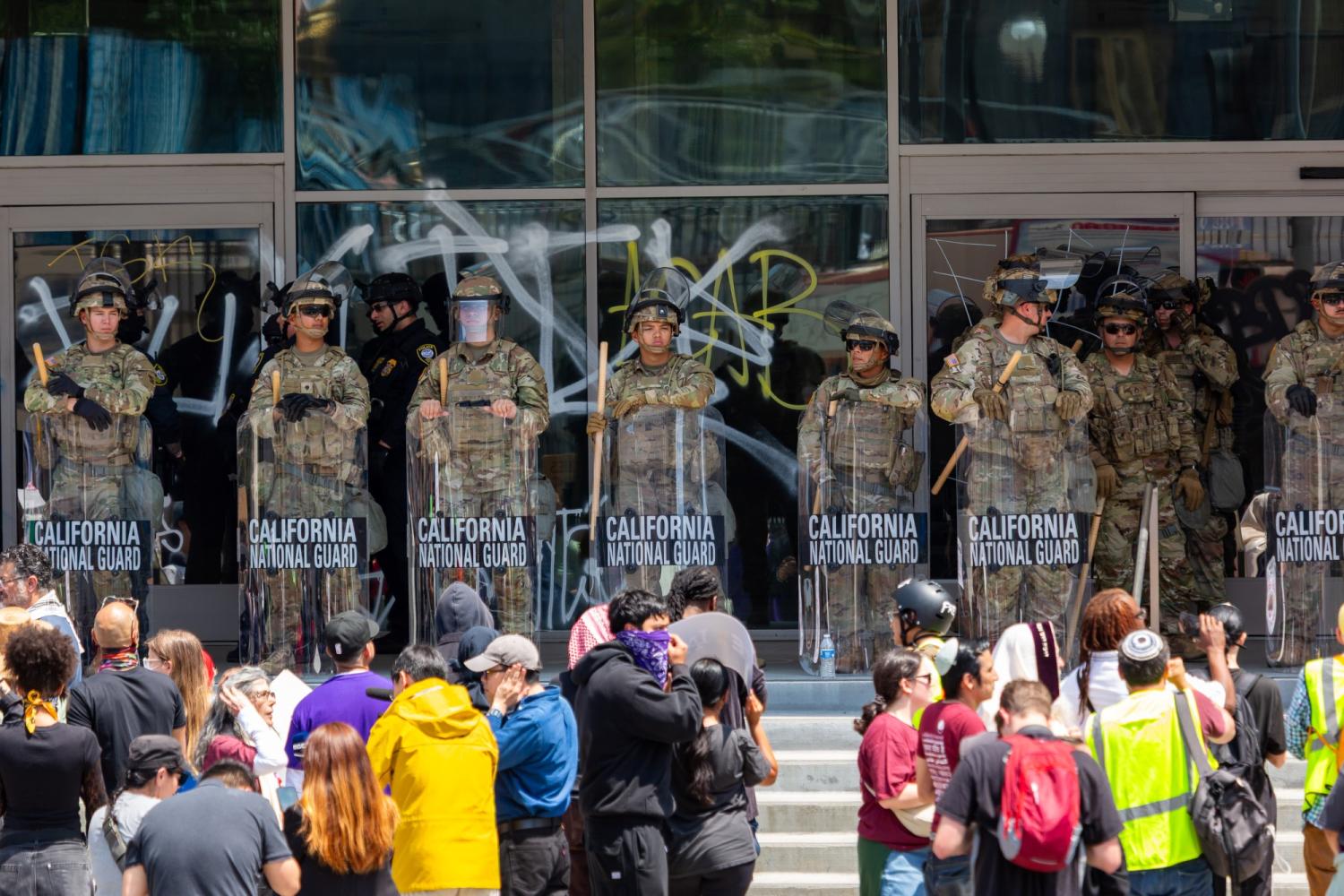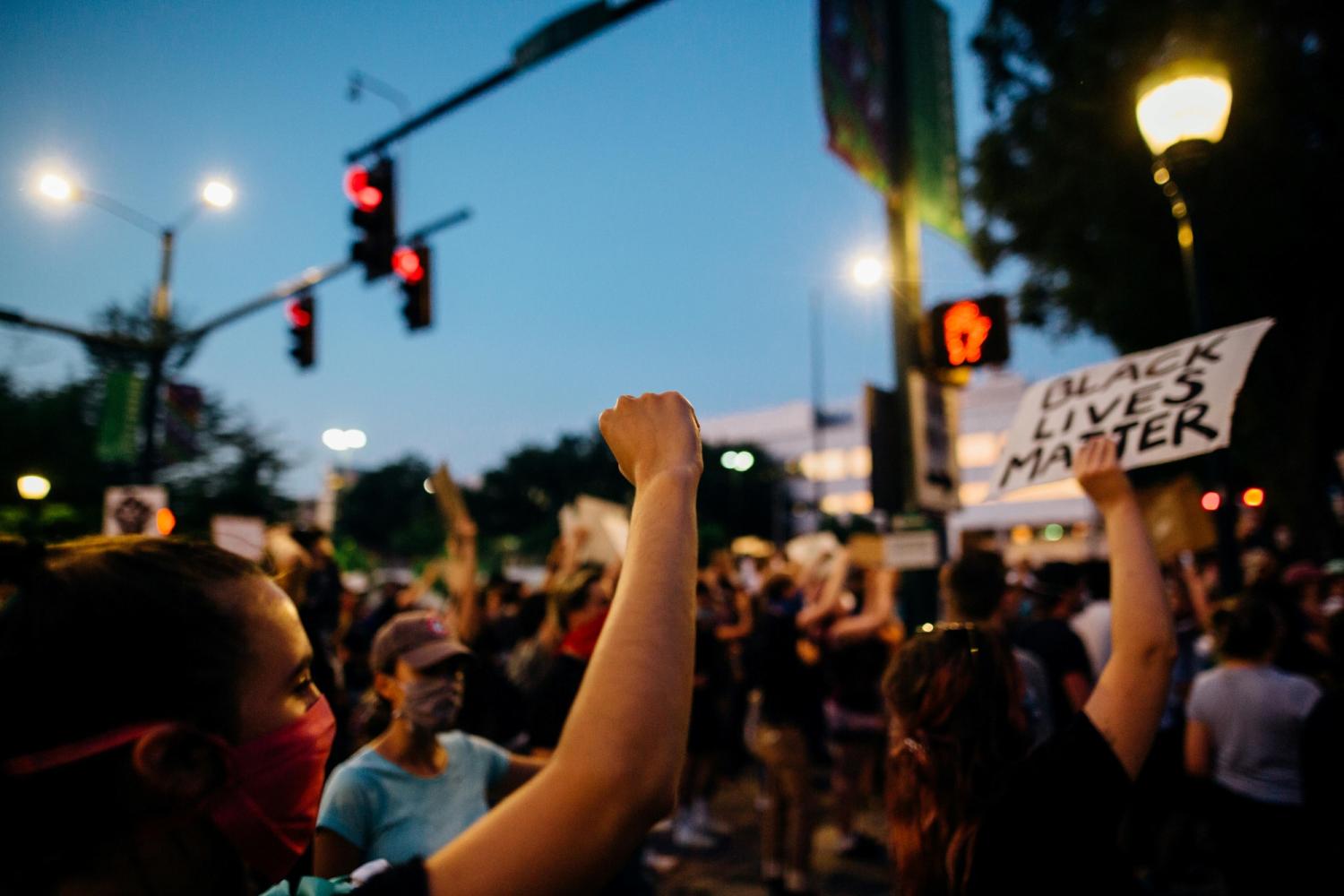Protesters taking freedom of assembly to the streets
CU Boulder conflict scholar Michael English explains why public protests matter and what they can mean in the current political and social moment
One of the most storied protests in U.S. history happened Dec. 16, 1773, when a group of Massachusetts colonists, angry with British tax policy, dressed in Indigenous garb, boarded British East India Company ships anchored in Boston Harbor and dumped 342 chests of tea into the water—the infamous Boston Tea Party.
In response, however, British authorities did not amend tax policies but instead closed the harbor.
“If you look at the way we talk about the Boston Tea Party, here’s this event that we don’t generally describe as starting a revolution from violence,” says Michael English, director of the University of Colorado Boulder Peace, Conflict and Security Program. “We start with people dressing up and doing this mass protest where they destroy some business owner’s property, which is something we’ve historically tended not to support.

CU Boulder scholar Michael English, director of the Peace, Conflict and Security Program, is a specialist in conflict analysis and resolution.
“Then, in the 1780s, we get Shay’s Rebellion, where poor debtor farmers come into Boston to try to preserve what’s left of their farms, and the state raises a militia to put down this protest. Throughout our history, things bubble up and then there’s this backlash. It’s just an interesting quirk of this country that we embrace protest and hate protest.”
That central tension of public protest has been above the fold this week as federal troops have been called in to respond to Los Angeles protests over ICE raids and as No Kings protests are planned in cities across the country Saturday.
What does it mean when people gather to protest—a right enshrined in the First Amendment? English recently considered this and other questions in a conversation with Colorado Arts and Sciences Magazine.
Question: Do public protests matter or make a difference?
English: A protest is something that, at least from a scholarly perspective, is there to send a message to people in power. As someone sympathetic to protest as a great American tradition, I have to say yes, protest matters. What does it do? That’s a more open question. In some sense, it can start us thinking about whether protest itself is the goal, or whether we want it to lead to something more.
Take the No Kings protests—is the goal to get President Trump to change a specific policy? It doesn’t appear to be so, and that’s not how protest organizers are framing it. Instead, it seems to be, ‘We want to bring a whole lot of people out to express that we are very unhappy about the direction of our country and what appears, to people sympathetic to the protests, as this power consolidation within the executive (branch).’ If millions and millions participate Saturday and we have protests on the scale of Black Lives Matter or Occupy Wall Street or protests against the war in Iraq—if they are able to bring those people out—did this protest do what it set out to do?
If that happens, I think we could answer yes. If they bring a lot of people out and the protests stay nonviolent and not a whole lot of negative things are associated with them, then we can begin to explore whether this is part of something larger, or whether it is this just a one-off thing that sent a message?
Question: Has what’s happening in Los Angeles, with federal troops called in to respond to public protest over ICE raids, brought a new layer to current protest?
English: These are new times, yes, but in some ways, there are parallels in the past. The National Guard has been called out at different points—in fact, Gavin Newsom did invoke the National Guard during Black Lives Matter protests, which is not even that far in the past. What’s happening now in Los Angeles does raise really interesting questions. When you look at movements in the past and look at the military being deployed, it’s usually been in service of the movement—school desegregation or Johnson enforcing the Voting Rights Act. These were actions in favor of the movement. Then there’s everything after, which has been the National Guard being sent out to quell unrest.

California National Guard members and protesters in Los Angeles in June 2025. (Photo: U.S. Northern Command)
In Los Angeles, there wasn’t actually a lot of unrest until you started bringing more and more force in, whether that’s more police, then the National Guard, then threat of the Marines. That’s a real thing we should worry about, because it does create a mirroring tension where people may escalate because they feel that those on the other side of them are prepared for confrontation.
Question: Is nonviolence still central to public protest in the United States?
English: I would say yes, there still seems to be a fairly significant commitment to nonviolence. But the further we get away from the civil rights framing of nonviolent protest, the harder it is for people to understand what that means and what goes into it. We’ve seen that the discipline between people participating in these events now seems to break down a little quicker, and there isn’t the same build-up over time of participants receiving training to participate (in nonviolent protest). There are some really interesting videos of James Lawson getting civil rights protestors ready for the freedom rides, and the training was they basically beat you up to make sure you wouldn’t respond. If you couldn’t do that, you weren’t going to get sent into that situation.
I think for the most part people are still committed to nonviolence as a strategy to bring social change, but in the same breath I can say that there’s always been a kind of violent contingent associated with protests in the past.
It’s easy to assume, when we look backwards, that we can tell a rosy story of civil rights movement, but we would be missing episodes that weren’t so friendly. If you look at Black Lives Matter protests, 95% of those protests were nonviolent, but the ones that get our attention are always the ones where violence occurs, and that’s just how movements work. Organizers of movements can certainly intervene, and you see that in the No Kings messaging, this attempt to say, ‘We need to police this; these are strategies for helping people who seem disruptive or are not at the same level of discipline.’ It gets back to the question of whether everyone who’s participating in a protest is on the same page and, if not, is public protest the best strategic choice for the movement?
Question: How have social media affected or changed how public protest happens?
English: It’s a real mixed bag at the moment. On the one hand, I watched the Arab Spring protests on my computer at work—I watched the protests in Tahrir Square and watched these folks engage across Facebook at the time—and that was super powerful, I’ll never forget that. And social media played an important role in the movement because young people knew how to use it and it gave them an advantage against regimes that, at the time, did not understand and just wanted to dismiss it outright. I would say the same thing about Occupy Wall Street and the first generation of Black Lives Matter when we were protesting the deaths of Trayvon Martin and Mike Brown. Social media was really powerful there.

"A protest is something that, at least from a scholarly perspective, is there to send a message to people in power," says CU Boulder conflict researcher Michael English. (Photo: Pexels)
But then we see this shift past 2016, where social media starts to feel super performative to people. I have students tell me that in one sense it’s great because they learn about things they didn’t know were going on, but on the other hand, yeah, you could post a picture or a video but didn’t really have to do anything about it. So that’s one critique, that it makes movements seem performative and like something people are just doing for an afternoon for social clout.
Now that we know so much of social media is being scraped by authorities to identify who people are and all of this kind of network tracing, it puts people who participate in movements in real danger if they’re careless with their social media. You’re making a record of something that who knows how it’s going to be used in future. It's certainly going to change how movements go forward, so it’s good that we’re having these conversations now when there’s real concern among people over whether they can participate—whether they feel they can participate—knowing somebody could scan your movements and identify you as having been there.
Question: How do you respond to the argument that protest doesn’t accomplish anything and change only happens by running for public office and creating policy?
English: I would say it depends on what the point of the movement is. With some movements or protests, depending on how the message is being put out there, the end goal may be that we’re showing our discontent now, with the idea that we’re going to support certain people running for political office or pressure legislators on a particular policy. But this can get complicated when the routine methods of forcing political change don’t seem like they’re working or seem really far off. I mean, the mid-terms are more than a year and a half away; how much impact does protest this weekend have for political office in a year and a half?
So, I come back to the idea of protest as building that collective solidarity, letting people know there are others who are upset and there is strength in numbers. Then I wonder what happens when we do find that redline issue that really upsets people. I think right now we’re still waiting for a redline issue—the thing this or any president wants to do that a majority of American people don’t support and don’t want.
The amazing thing about studying social movements is the speed at which they can escalate is really unpredictable and can be really intense. If you look at Black Lives Matter, for instance, that pushed a ton of young people to become interested and run for office. So, it could be the case that people leave this protest (Saturday) and they’re like, ‘I really want to make a difference and really want to ensure there’s a different kind of political majority in office come the next election cycle.’
Where it gets tricky is if nobody is pushing that message, or if the message is that there’s no way change can happen through the existing political system, then people might dig into cynicism and say it all just needs to collapse. We do need that central conflict because conflict is good, conflict is normal; we just don’t want the violence. Violence is where we have something that’s clearly gone wrong. But people coming out and expressing that they’re angry and upset? That’s what we want in a democratic society.
Did you enjoy this article? Subscribe to our newsletter. Passionate about peace, conflict and security studies? Show your support.

